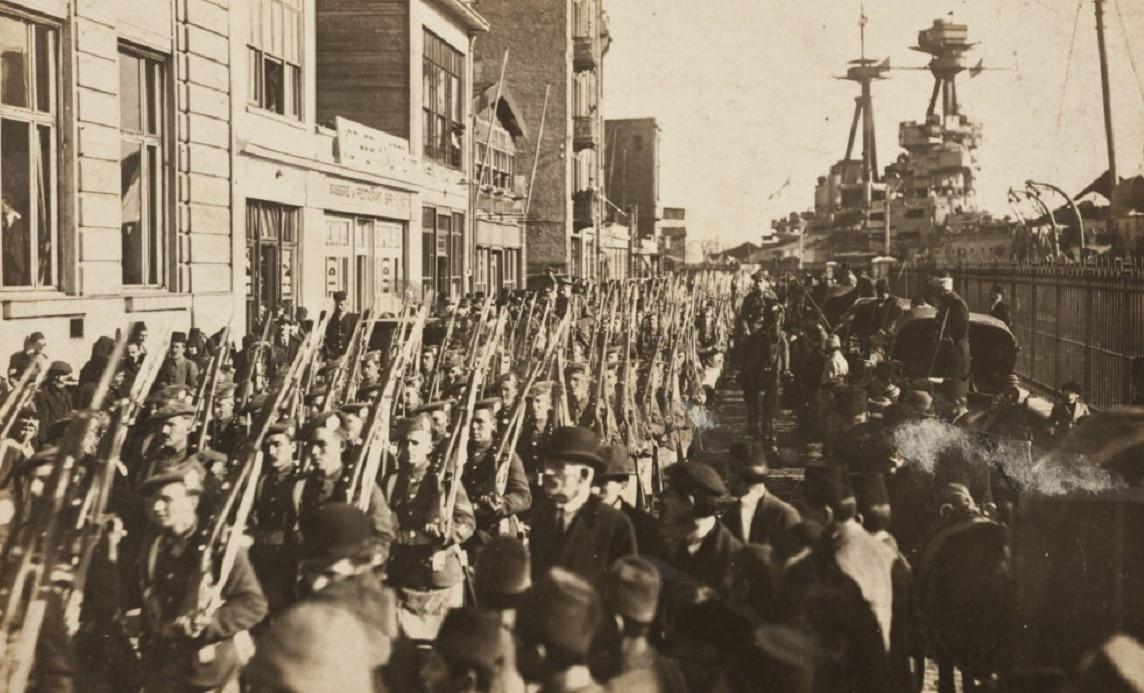Story of once occupied imperial capital Istanbul in exhibition
ISTANBUL

The Suna and İnan Kıraç Foundation Istanbul Research Institute’s latest exhibition presents a glimpse into Istanbul occupied by the British, French and Italian armed forces after World War I, as revealed through written accounts and images discovered in the archives.
Curated by Daniel-Joseph MacArthur-Seal and Gizem Tongo in collaboration with an international team of advisors, the exhibition “Occupied City: Politics and Daily Life in Istanbul, 1918–1923” delves into the military, social and cultural aspects of the occupation, which lasted from November 1918 to October 1923.
The exhibition features a range of textual and visual materials, from official documents to paintings, films, and photographs from various libraries, archives, and collections in Türkiye, France, Britain, Greece, Armenia and Russia, most of which are on public display for the first time.
These materials, in addition to the archives of the Istanbul Research Institute, provide a unique opportunity for visitors to explore the rich history of the city. The centenary of the Allied withdrawal from Istanbul and the arrival of Turkish troops provide a timely moment to revisit the often-forgotten individuals, events and movements that defined a city that was, in all senses of the word, occupied.
The show reflects the dynamic nature of Istanbul, a city undergoing significant political, social, and cultural changes during the years of occupation. In those years, Istanbul was, in every sense of the word, an occupied city. Who would remain and who would rule was the subject of rumor and speculation, exacerbated by the contradicting statements of Allied statesmen, successive Ottoman cabinets and the Ankara government.
Residents of the city witnessed and participated in mass demonstrations to protest against violence and occupation. Amidst the upheaval, people continued to strive to better others’ lives and their own. Schools, institutions and community organizations were opened; concerts and exhibitions were held with the contribution of diverse talents and patrons; new political, literary, and artistic ideas enlivened the pages of a flourishing press; and charities raised funds for the support of refugees, wounded veterans, orphans and the city’s poor.
World War I and its subsequent conflicts brought about the economic collapse of the city. The population, overwhelmed by economic instability and inflation, struggled to make ends meet. The fires that ravaged different parts of the city during the occupation years rendered thousands of Istanbul residents homeless. The declining number of homes, coupled with the rising demand for shelter from an influx of immigrants and asylum seekers, caused the cost of living in Istanbul to surpass the global average.
In addition to epidemics such as the Spanish Flu, which took the world by storm in the 1920s, typhoid, typhus, tuberculosis, and cholera, which were exacerbated by the unprecedented population movements, sexually transmitted diseases were also a cause for concern for both city authorities and the occupation forces.
The arrival of soldiers and refugees, including numerous musicians and influential patrons, breathed new life into Istanbul’s musical entertainment industry. Classical music flourished under the patronage of both the Allies and the Ottomans, and clubs such as Maxim, located in Taksim Square, introduced new music genres like jazz to the city.
Both local and immigrant artists made significant contributions to the art scene in Istanbul through their performances and teachings, particularly in the field of painting.
Meanwhile, the disastrous impact of World War I on education persisted during the occupation period, with schools established by Ottoman allies in the imperial city during the war being closed, some of which were seized and converted into hospitals and barracks.
The “Occupied City: Politics and Daily Life in Istanbul, 1918–1923” exhibition presents a unique opportunity to delve into and understand the various traumas and radical transformations experienced on military, social, and cultural levels by an imperial capital that was occupied for nearly five years.
The exhibition can be seen through Dec. 26.
















